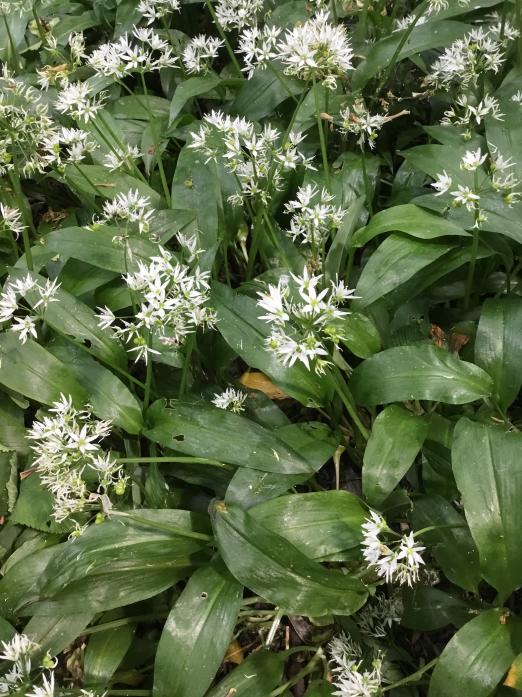
Wild Garlic, Ramsons, Allium ursinum
WILD garlic, or ramsons is a member of the onion family and has broad green leaves more than two inches wide on a stem (petiole) that is twisted through 180 degrees, with the result that the leaves are actually upside down.
The petiole base is swollen to form a small, solitary, narrow bulb.
The plants are found in damp woods and shady places, forming “local societies”. Although they share the same habitats as bluebells, the plants do not intermingle.
The twinkling inflorescence on each plant is flat-topped, with up to 20 white flowers that have half inch long segments.
They are pollinated by insects and self-pollinated too. The seeds are black.
Unlike many in the onion family, wild garlic does not produce little onion-like bulbs (called bulbils).
Wild garlic is common throughout the United Kingdom, but absent from Orkney, Shetland and the Channel Islands
The ancient name, ramsons, is derived from the Old English hramsa, meaning onion or leek, and it resounds in many English place names like Ramshope, in Suffolk, Ramsholt, in Northumberland, and if you ever thought Ramsbottom, in Lancashire, had something to do with sheep, think again, as the name means “wild garlic valley”.
Wild garlic is used in cookery. It can be added to salads.
Soup can be made from the young leaves, and wild garlic can be used as a base, in the same way basil is used, in pesto. In Norway, fresh mackerel wrapped in wild garlic leaves is a traditional dish.
However, it comes with a warning that it “causeth headaches, hurtheth the eyes and maketh a man dim-sighted, dulleth the senses and provoketh overmuch sleep especially if eaten raw”.
Is it possible that an allergy to onions was more frequent in the Middle Ages, since a 1547 herbal claims “they muste eat no salades, garlyke, ramsones, onyons, chybolles or scalyons”?
Yet another, lesser known, hazard of the TT races in the Isle of Man is that the surroundings of the course are rich in wild garlic, and spectators have been accused of coming home reeking of the stuff.
Dr Richard Warren is a botanist from Barnard Castle





